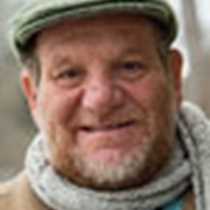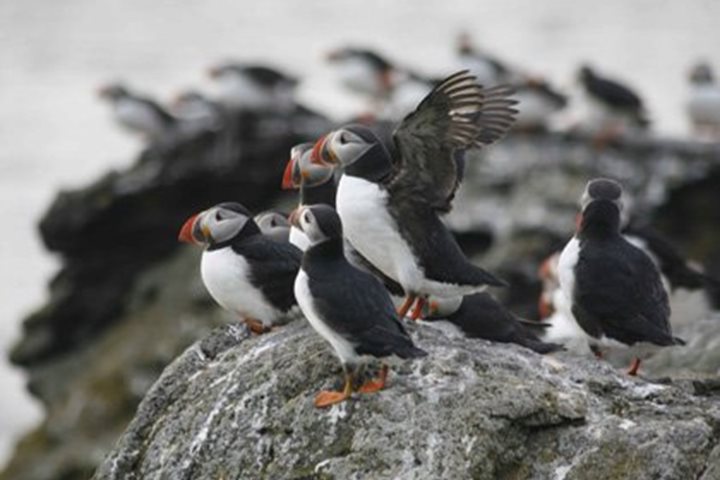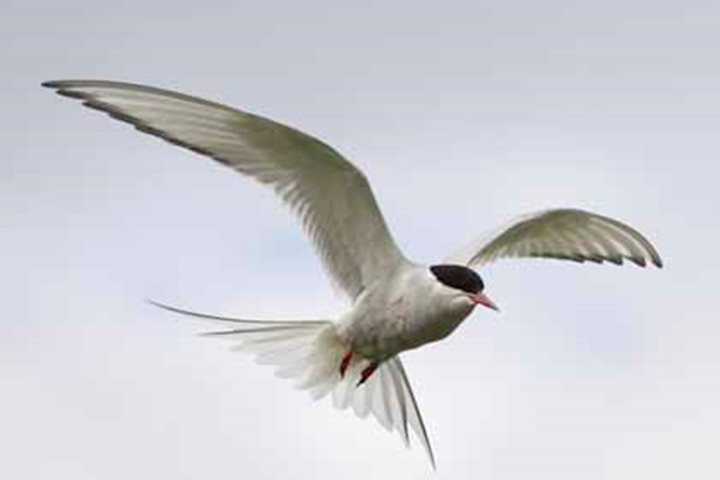A brisk wind greeted us upon awaking this morning as we approached the bird cliffs of Látrabjarg. Swirls of fulmars drafting off the National Geographic Explorer flew close enough to the bow that we could almost touch them as they swooped close as if to show us that the sky is their domain, and we are only visitors. The closer we got to the cliffs the more birds surrounded our ship. Common guillemots, razorbills, kittiwakes, and the prize for us all, Atlantic puffins. The cliffs tower more than 400 meters from the surface of the sea, and stretch for 14 kilometers in length. Látrabjarg is the home for thousands, indeed, hundreds of thousands of seabirds that nest on the many layers of basaltic lava flows. Like a natural high-rise each species prefer different levels of the cliffs, and variations of the rock to lay their eggs.
As we slowly sail along the coast, the auks scramble to safety, some taking to the air, while others take the more sensible exit of diving beneath the waves where their wings are better suited to fly underwater. For our guests, the game is to try to sort the different guillemots from the razorbills, the puffins with their colorful bills are easier to discern from the others.
On board with us are a group of Icelandic residents from various aspects of Icelandic society, and after our visit to Látrabjarg we were treated to a discussion of Icelandic life from people whom are involved in the infrastructure of this wonderful culture. It was an insight into the issues facing the Icelandic people and how Iceland is fitting into the world at large, and the innovations that are allowing Iceland to flourish.
In the afternoon we got to visit the island of Flatey, which in Icelandic literally means Flat Island. Flatey is an island where it seems as though time had stopped a hundred years ago. Only two families still call the island there home and in winter only five hearty residents live there. Now however, it is summer and although you would still not consider it a bustling coastal town, it is wonderfully beautiful setting for a few more seasonal visitors to call home. The homes nestled among the rocky coast are simple but colorful, and the people are warm enough to fend off the cold wind that surrounds us. Even though you would never know it by looking at the little village it has an important historical significance. It was here that the Flatey book was discovered and a copy of the book resides in the small library on the top of the island. The Flatey book is the largest of the medieval manuscripts of Iceland and dates back to the late 1300s. The book contains a collection of Kings Saga’s and offers insight into the people who once inhabited this part of the world so long ago.
For us, the natural history is as inviting as the human history and it is a unique opportunity to walk among pastures of bird colonies of eider ducks, artic terns, redshanks, phalaropes. The opportunity to be here in the mix of these friendly people and pristine nature was truly a pleasure.
Back on board the day was not yet finished. This evening after dinner we were treated to live music from a group of local musicians that are traveling with us. Even though the day was long, the music was the perfect ending of this wonderful day.






